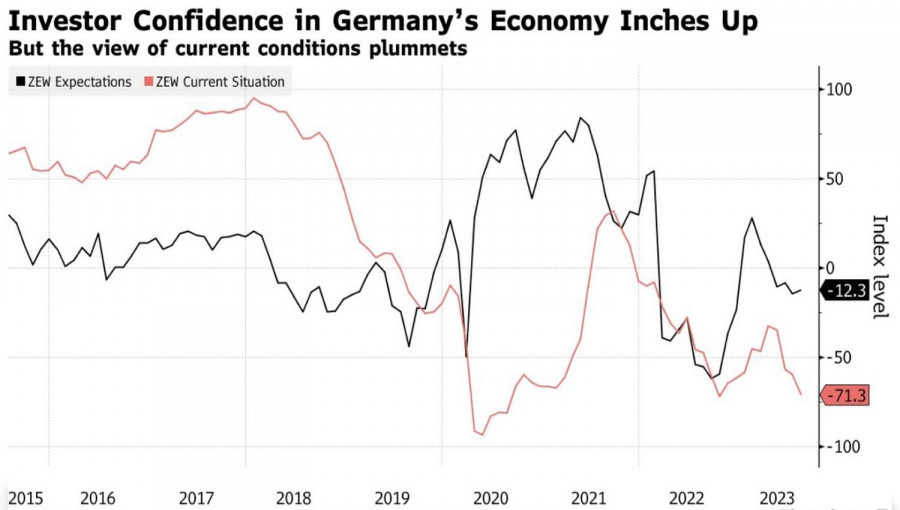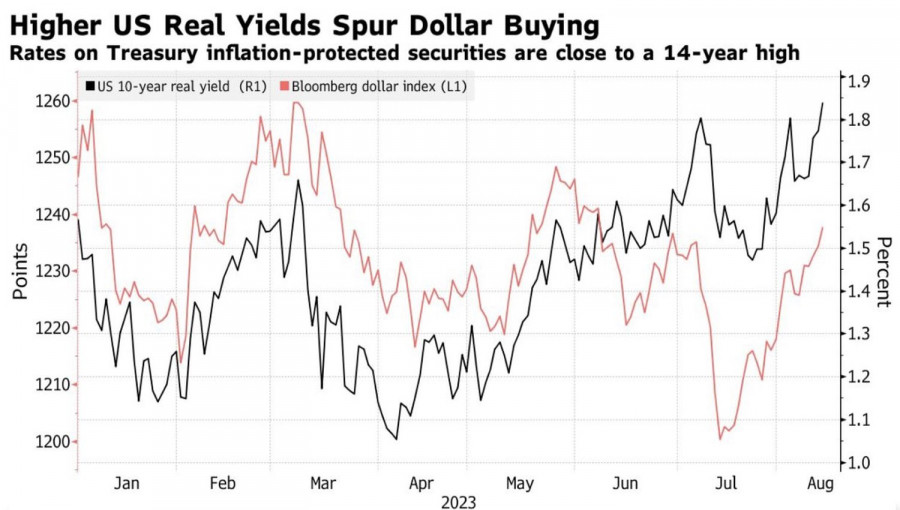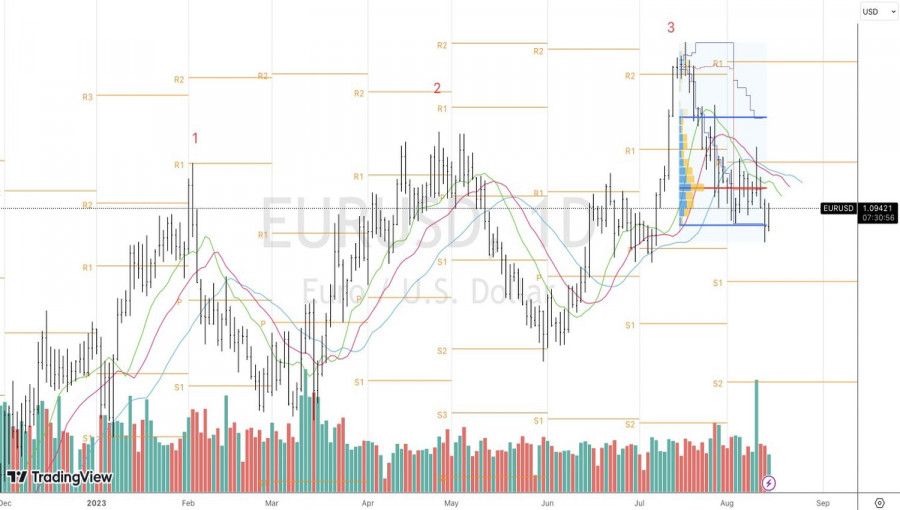The euro is resisting, but it looks like convulsions. The EUR/USD is trying to hold above 1.09, clinging to the improvement in investor confidence in the German economy and the resurgence of hopes for the Bank of England to raise its repo rate by 50 basis points to 5.75% at its September meeting. The British pound and other European currencies owe thanks to the record wage growth in the UK. However, no matter how mutual the support is among the European currencies, they cannot withstand the surging U.S. dollar.
Germany's ZEW economic sentiment index was better than Bloomberg experts' forecasts in August, but the current conditions indicator dropped to its lowest level since October 2022. Such dynamics are due to the respondents' optimism about the end of monetary tightening cycles by the Federal Reserve and the European Central Bank, as well as the strength of the U.S. economy.
Dynamics of economic sentiment and current conditions in Germany

The positivity has allowed the euro to lift its head, particularly as record wage growth in the UK led Saxo Bank and TD Securities to forecast a 50 basis point increase in the repo rate at the Bank of England's September meeting. This helped the pound and accelerated the counterattack of the EUR/USD bulls. Nevertheless, the securities market's conjuncture favors the U.S. dollar.
Despite the fact that yields on British bonds have risen faster than on American and German bonds since the beginning of the year, in August, the real yield on U.S. Treasury bonds reached a 14-year high. This has created a favorable external backdrop for the USD index.
Dynamics of the dollar and real U.S. bond yields

Indeed, as U.S. consumer prices slow from over 9% to 3% over a year, and inflation expectations for the next year, according to the Federal Reserve Bank of New York, fall from 3.8% to 3.5% in July, all the necessary conditions for real interest rate growth on debt are being met. At the same time, the nominal yield on Treasury bonds is increasing due to large-scale issuance by the Treasury Department, the Federal Reserve's quantitative tightening program, and expectations of a soft landing for the U.S. economy.

Meanwhile, the euro is under pressure from sad news out of China. Disappointing statistics on retail sales, industrial production, real estate sector problems, and foreign trade forced the People's Bank of China to lower rates ahead of schedule. This was perceived by investors as the regulator's concern for the prospects of the Chinese economy. Both the yuan and the euro suffered. It is evident that the heavily export-dependent Eurozone and its currency feel out of their element when the leading economy in Asia stumbles.
Technically, on the daily chart, the EUR/USD correction continues towards the upward trend. The bulls managed to cling to the lower boundary of the fair value range of 1.091-1.1125. However, as long as the pair's quotes are below the resistance at 1.098-1.0985, the emphasis should remain on selling.
The material has been provided by InstaForex Company - www.instaforex.comfrom Forex analysis review https://ift.tt/az6Lnxe
via IFTTT
